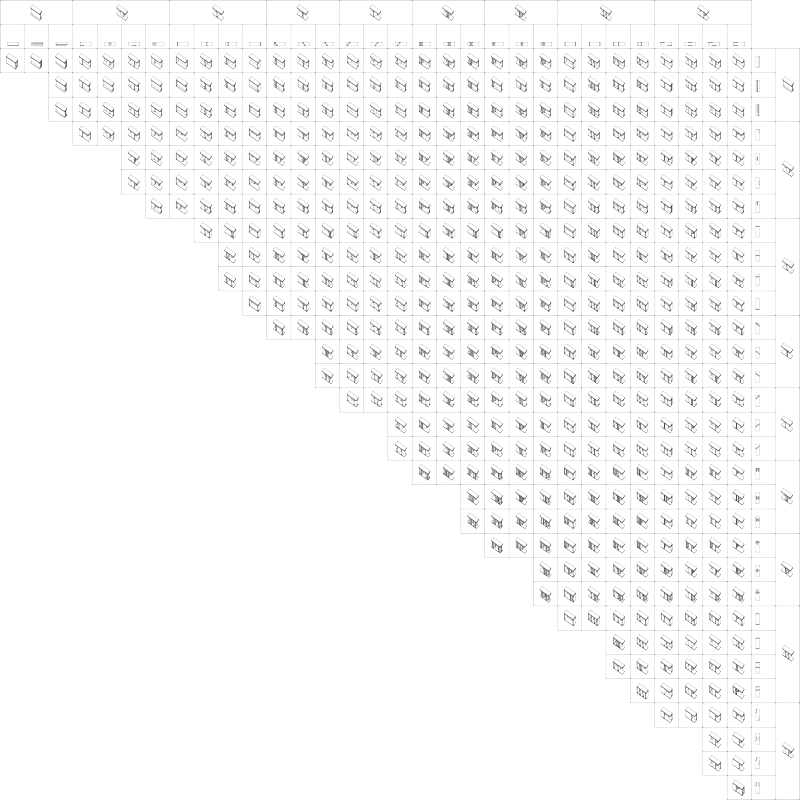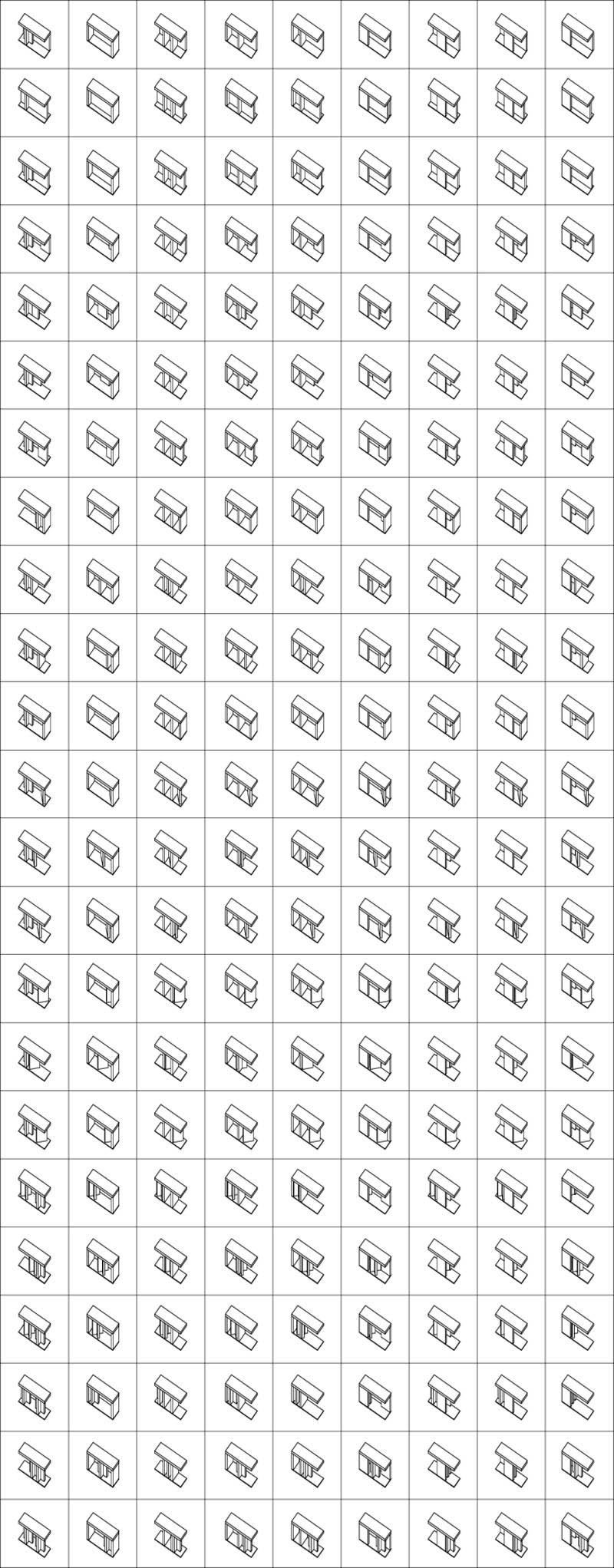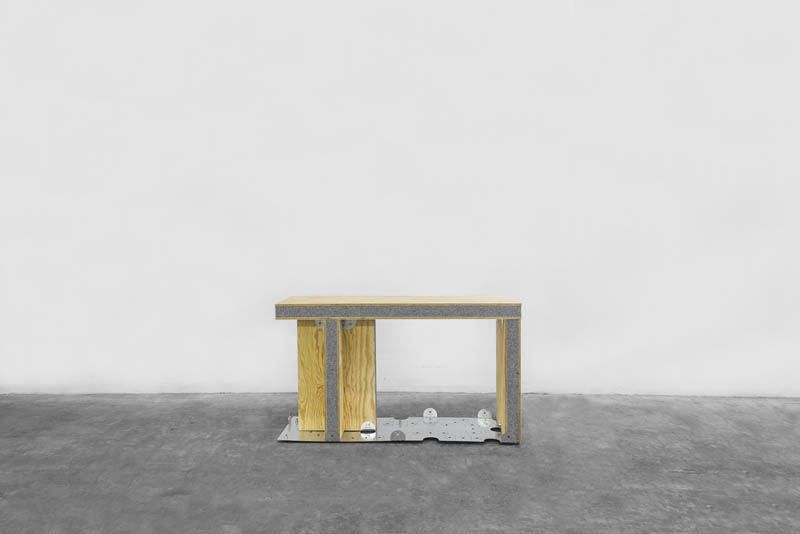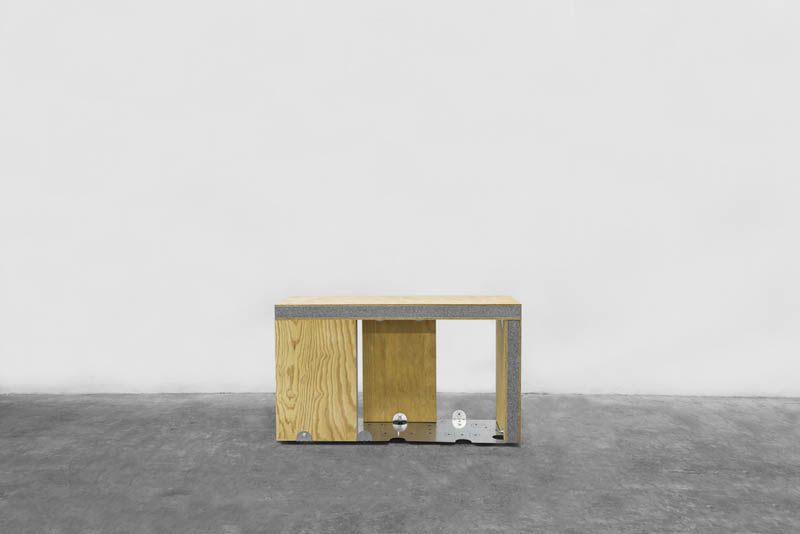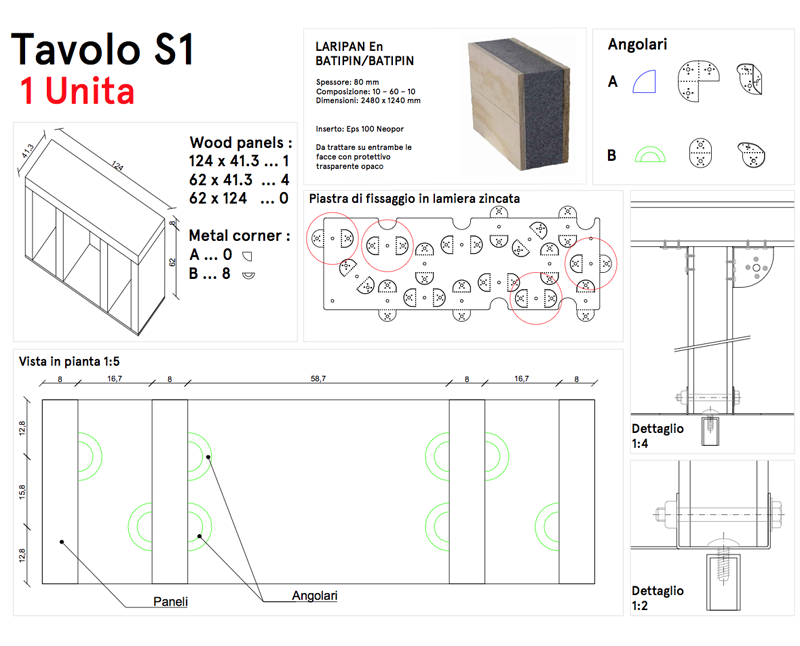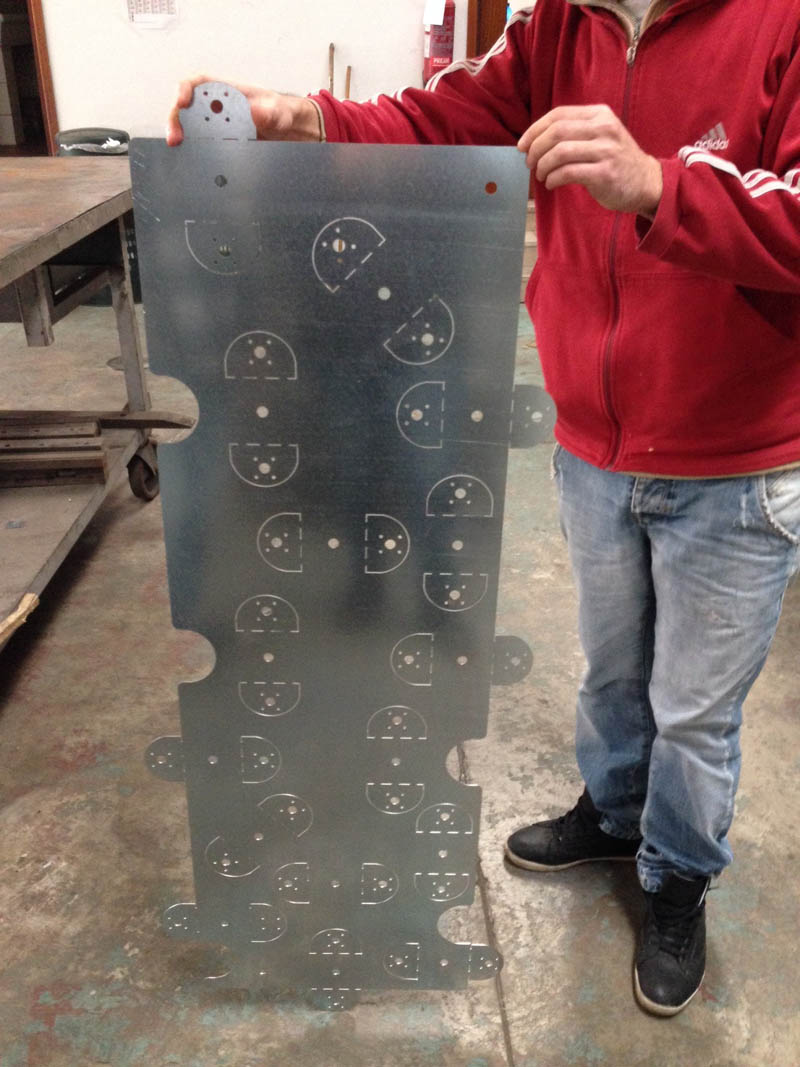Arthur
More or less 479
More or less 479 tables is a research about creating diversity within repetition. This work consist in designing a method to creat a finite amount of dresser desks. The process is simple : a laser cutted metal plate works as a motherboard that can host all the combinasions of wooden panels structure.
“Desks Possibilities consists of a collection of insulate panel structures and a presentation of these panel structures with their potential combination into small (41,3 x 124) and large (62x248) dresser desks. Each desk sits on top of a fixing plate cutted into a galvanized steel sheet that works as a motherboard and secures the combinatorial potential. We look at this system to explore (and include) the full optimization of a galvanized steel sheet and insulate panels standard commercial measures but as well to achieve maximum flexibility and the biggest number of desk possibilities out of it. Many artists, architects and designers have throughout and since the 21st century tied their creations and, in particular, their designs for furniture to standard, modular and therefore similar practical and rational forms and principles as the one we applied. Following the language of combinatorics, more than to design products they produced devices and their rules and then locked these devices on the principle of maximum results with, and most importantly, economic output verified in visual language studies. Through this, consumer choice and variety has become part of the dialogue between designer and manufacturer, and the process, product and production flexibility a response to the project, determining final form. The catalogue for Gilbert Rohde’s Executive Office Group (EOG), a modular system for office-furniture completed in 1939, offers an early example of this type of design. It is, in this respect, a manifesto for more functional than decorative forms and not only a simple catalogue of offerings. In the early 1940s, Eero Saarinen and Charles Eames had jointly produced a suite of modular domestic furniture for the Red Lion Company, composed of standardized units (modules) that can be subsequently modulated to ensue larger and more complex configurations. In the formulation of their ideas, the products and prototypes that resulted from the incorporation of systems, new principles of abstraction and elementary geometric forms enabled a new and satisfying versatility for the designer and the consumer but as well the ability to exercise creativity in a wide variety of media and materials. In Italy, this new and satisfying versatility (and creativity) was informed by a wider surge or interest in the DIY culture and concept, understood as a form to counter the specialists discourse and to resist passive consumerism. Enzo Mari, the architect of the Proposal for un’Autoprogettazione (1974) is famous for inviting the public to make their own furniture according to a series of his own simple and easy-to-assemble utilitarian designs. The book takes the publication printed for the exhibition at the Galleria in Milan, curated by the center Duchamp, and represents a stimulus to the bindin g of creativity with the constructive capacity of each consumer not only designer. In tune with this sensibility, he has developed the design of a machine for producing volumes through light. The design of this machine, composed of a series of 64 equidistant light bulbs on a set of parallel sheets of Plexiglas, and entitled Structure 895, Homage to Fadat (1967), operates with a control panel of 64 switches and it involves the feed-back and individual initiative of the manipulator - in the high volume of virtual combinatorial configurations derived out of it. The machine of Enzo Mari is a game of conceptual and programmed artistry. For him, the designer and “researcher should experiment programming methods to modulate elements. It would be necessary to find a series of rules or programs where it is possible to create with great liberty of composition. This programming depends on the fact that the spectator sees only elements of art-work but not the whole of artwork (Mari, 1963)”. It is perhaps for this reason that Sol LeWitt’s work Variations of Incomplete Open Cubes (1974) is empty and skeletal, white, permeable to air and light, reduced to the absolutely necessary in terms of means and physical presence. The modular structure, composed of 122 fragmented frames, focuses on the system that justifies its designs, on the axiom by which all the variables of the system might account for. It does not have a reason but was instead developed from the governing principles of his conceptualist approach and artistic serial progression sculptures that explore all the possible combinations of horizontal, vertical and diagonal lines (see in Wall Drawing 1: Drawing Series, 1968) and, or of different kinds of open and closed forms (see Three-Part Variations on Three Different Kinds of Cubes, 1967-71). The strength and seriousness of Variations of Incomplete Open Cubes (1974) lies in its very ability to simultaneously animate contradictory and complex ideas (see Baume, 2001). The forms, the procedures, progressions and systems that established its variations operate with the rules of a world-view that “should be followed absolutely and logically”, as LeWitt declares. It results in a grammatical device from which seriality can be traced and in this way it makes a part suggest the whole. This is as well our idea. It is not a new idea but the idea that have helped us to find a systematic means of figuring out the exact number and forms of possible desk variations made out of the full optimization of a galvanized steel sheet and insulate panels standard commercial measures: an obvious economic and aesthetic constrains. The root principle and axiom by which all the variables which generate the system also explains it.” Joana Rafael writing about the project.
